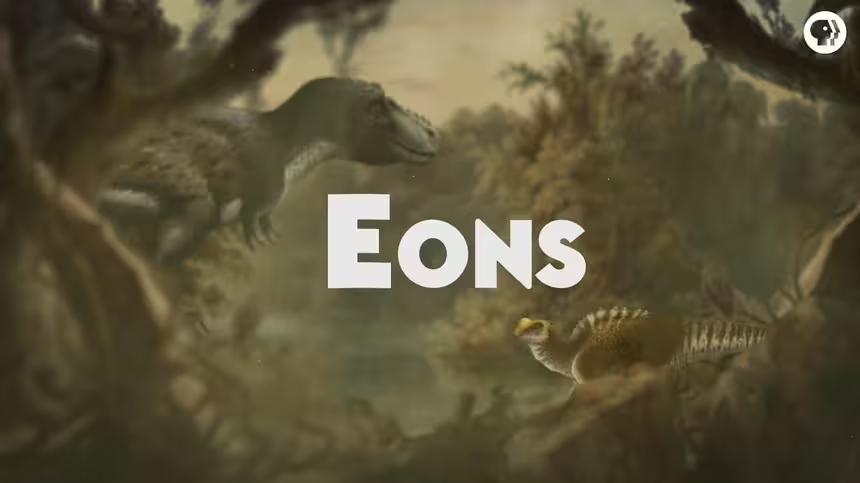
Beans & Bees (Not Bats) Gave Us Butterflies
Season 6 Episode 9 | 7m 9sVideo has Closed Captions
Turns out bats didn’t give us butterflies and we should be thanking bees and beans.
For a few years we thought bats were to thank for the existence of butterflies. The idea was that the evolution of bats drove one group of moths to abandon the night entirely, becoming active during the day to escape, giving rise to butterflies. But it turns out the groups we should actually be thanking for the beautiful bugs are bees and beans.
Problems playing video? | Closed Captioning Feedback
Problems playing video? | Closed Captioning Feedback

Beans & Bees (Not Bats) Gave Us Butterflies
Season 6 Episode 9 | 7m 9sVideo has Closed Captions
For a few years we thought bats were to thank for the existence of butterflies. The idea was that the evolution of bats drove one group of moths to abandon the night entirely, becoming active during the day to escape, giving rise to butterflies. But it turns out the groups we should actually be thanking for the beautiful bugs are bees and beans.
Problems playing video? | Closed Captioning Feedback
How to Watch Eons
Eons is available to stream on pbs.org and the free PBS App, available on iPhone, Apple TV, Android TV, Android smartphones, Amazon Fire TV, Amazon Fire Tablet, Roku, Samsung Smart TV, and Vizio.

Welcome to Eons!
Join hosts Michelle Barboza-Ramirez, Kallie Moore, and Blake de Pastino as they take you on a journey through the history of life on Earth. From the dawn of life in the Archaean Eon through the Mesozoic Era — the so-called “Age of Dinosaurs” -- right up to the end of the most recent Ice Age.Providing Support for PBS.org
Learn Moreabout PBS online sponsorshipAround 55 million years ago, above a warm tropical sea in what’s now Denmark, an ancient butterfly flapped its wings for the final time.
As it died, it tumbled into the water below, sinking to the bottom and becoming buried.
In 2016, this tiny insect was identified as the oldest butterfly fossil ever found.
And for a long time, this time period - the Eocene epoch - was assumed to have been when butterflies originated.
Not just because that’s when their earliest fossils date to, but also because that's when bats first appeared.
The idea that bats basically invented butterflies might seem like a weird logical leap, but here's what some scientists were thinking around the year 2000.
The first complete bat fossils we have also come from a little over 50 million years ago.
And it seems like echolocation evolved pretty early on, which would have made them skilled predators of nocturnal insects…like moths.
And, butterflies are basically just day-moths.
So the idea was that the evolution of bats drove one group of moths to abandon the night entirely, becoming active during the day to escape, giving rise to butterflies.
Or did they?
It turns out, instead of having bats to thank for the existence of these beautiful insects, the groups we should actually be thanking are bees and beans.
Butterflies and moths make up one of the most diverse orders of insects on the planet, called Lepidoptera, which means ‘scaly wings.’ There are at least 160,000 species of lepidopterans described so far, with 75-to-85% of them being nocturnal moths.
For context, that means that about one in ten known, non-microbial species on Earth is a Lepidopteran.
They’re thought to have diverged from their sister group, the caddisflies, as far back as the Late Carboniferous period, around 300 million years ago.
But the oldest fossil traces of them only date back around 200 million years, to the boundary between the Triassic and Jurassic Periods.
Those traces are these microscopic moth scales, reported in 2018 from sediment from a site in Germany.
Which means that the fossil record of lepidoptera is full of gaps.
And if you’ve ever held one in your hand, you know how delicate they are, so their relative lack of a fossil record makes a lot of sense.
For example, that Eocene formation in Denmark has produced around 25,000 insect fossils, but only one has been identified as a butterfly.
So despite butterflies being incredibly diverse, generally unproblematic, and distributed basically everywhere on Earth, until recently we could only really guess at their origin.
And it’s weird to me, personally, that a creature that’s so familiar to most of us would be such a mystery to evolutionary biologists.
Like, were they really just moths that were driven out of the night by bats?
Or did they have a deeper, more complex origin story than their fossil record alone suggested?
In 2019, researchers turned to modern evidence to try to solve the mystery, comparing genetic data collected from 186 species.
They used it to build a big family tree of moths and butterflies, with a set of rare fossils giving them specific dates for when certain groups evolved.
Their analysis allowed them to narrow down the timeframe of when butterflies actually split off from their nocturnal moth ancestor.
And the fossil-dated family tree that they created found that this split and their switch to daytime activity took place around 100 million years ago in the mid-Cretaceous Period, long before bats even first took flight.
And rather than the key trigger for the evolution of butterflies from moths being avoiding predators, the researchers argued it was more likely tied to new food opportunities.
Which is my favorite kind of opportunity... You see, angiosperms - aka flowering plants - were in the middle of a dramatic rise to global dominance in the Cretaceous.
And they had already forged an evolutionary partnership with other insects that are diurnal, or active during the day, by this time, like bees, which helped to pollinate them.
Flowering plants had become brightly colored to attract the bees and developed easy-access nectar to encourage them to visit, often blooming only in the daytime when bees are most active.
And many ancient moth lineages were already using a tube-like proboscis to suck up nectar, sap, and other liquid foods when they could.
But their nocturnal lifestyle meant that they were missing out on those prime daytime feeding hours.
So it would make sense that the first butterflies in the mid Cretaceous became diurnal to follow in the footsteps of bees.
Little tiny footsteps.
Now they could take advantage of the daytime nectar resources and attractive, bright signals that flowering plants had initially developed for a totally different group of pollinators.
So they didn't abandon the night to avoid new nocturnal dangers.
Instead, they embraced the daytime for the new ecological opportunities.
So that gave us some clues about the when and the why of butterfly evolution, but what about the where?
After all, they're basically everywhere today - even on remote and isolated islands, but they clearly had a single origin somewhere before their global dispersal.
Well that’s a more complex question to untangle, and it requires an even more complex data set… One that covers not just how they are related, but also how their distribution and lifestyle patterns reflect those relationships, too.
But if you know any evolutionary biologists, and I do, you know that they like a challenge… So in 2023, researchers published the most massive and comprehensive analysis yet to tackle the question of where exactly butterflies came from and how they spread to every corner of the planet.
They collected DNA from almost 2300 species from 90 countries, both from museum collections and the ones that they collected in the field.
And they combined this with information on species distribution, habitat preferences, and plant relationships.
Much of this information was pulled together from books and field guides from around the world, translated from many different languages.
Like, if this was a movie, this is the moment where we’d get a montage of the researchers blowing dust off of old books and opening drawers in the backs of museums and chasing butterflies around with a net.
Like Indiana Jones, but with butterflies, is what I'm thinking.
I would watch the hell out of that movie.
They analyzed all this data, calibrated with key fossils, and they modeled the rise and spread of butterflies far back in deep time.
And it looks like North or Central America was where the first butterflies adapted to life in the sun, around 100 million years ago.
And because modern butterfly lineages often have very specific host-plants that they feed on as caterpillars, the researchers were able to work backwards using a technique called ancestral state reconstruction.
This allowed them to figure out which plants the first butterflies were associated with.
And it turned out, in their earliest days, they fed on just one group in particular - bean plants!
Their relationship with the legume family was the original jumping off point for them.
And they were probably a pretty good host family to start off with, because they’re abundant in all sorts of ecosystems and don’t usually have defensive chemicals that keep insects from feeding on them.
Eventually, the earliest butterflies added other angiosperm hosts to their roster.
They diversified, coevolved, and dispersed alongside them into the nearly 20,000 species we know today.
And by the late Eocene, butterflies had made it to every continent, even passing through Antarctica at one point, though they don’t live there today.
The story of butterfly origins reminds us that ecological relationships in deep time aren’t always obvious and that new ways to answer old scientific questions are always evolving.
In this case, it meant rethinking our initial, simple hypothesis about bats in favor of a more complex understanding of the place of butterflies within ancient ecosystems.
And it turns out, we owe the existence of these familiar insects to American beans, Cretaceous bees, and a series of great migrations that brought this group of colorful, day-flying moths to almost every corner of the world.


- Science and Nature

A documentary series capturing the resilient work of female land stewards across the United States.












Support for PBS provided by:

